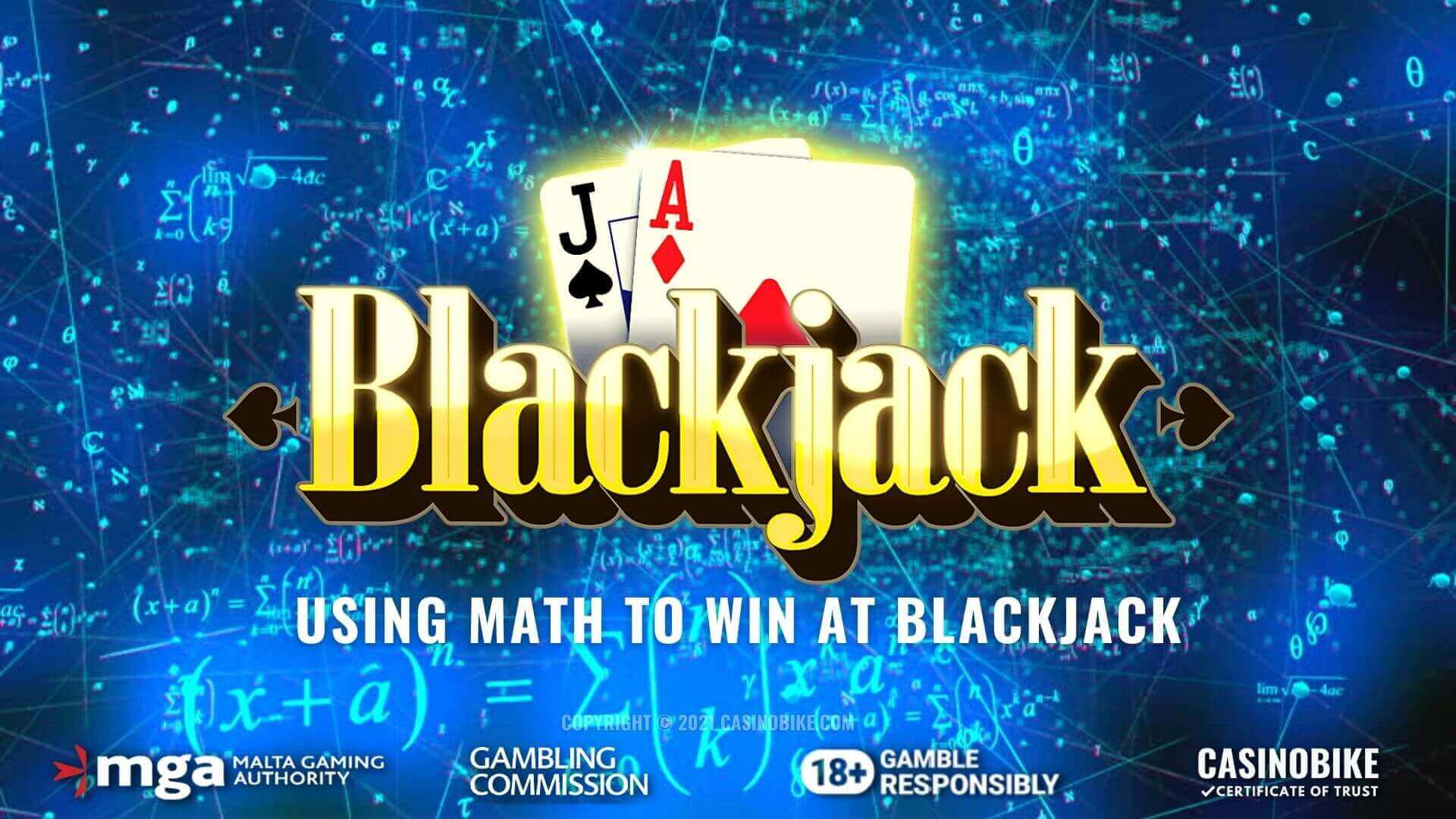In the 1990s, a group of MIT (Massachusetts Institute of Technology) students made hundreds of thousands of dollars counting cards, a trick that anyone can learn.
Using math to win at blackjack
The golden rule of every responsible casino player is that “in the long term, the casino always wins”. We don’t think it will surprise anyone if we say that casinos are exceptional at fulfilling their 2 main tasks. The first is to make it very unlikely that players will win. The second is to get them not to think about it too much. However, there are many different casino games. Roulette is tremendously mechanical and there is little we can do in winning at it, except to know when to fold. But, Blackjack is a casino game where mathematics can help us, for once, turn the tables and beat the dealer even in the long run. The trick is to know how to count.
This was the idea behind Robert Luketic film, “21 Blackjack”. In this film, some students from the Massachusetts Institute of Technology (MIT) led by Professor Micky Rosa (Kevin Spacey) gather a real fortune by taking advantage of their mathematical skills to succeed in Las Vegas. As improbable as it may sound, the truth is that it is based on real events, and although its characters are fictitious, the story is quite accurate. In the 1990s a group of MIT students teamed up to learn how to count cards professionally. During the years they were operating they amassed a real fortune, and this is how they did it.
The rules of card counting
Counting cards is both easier and harder than it looks. The rules can be learned in 2 minutes, but handling them fluently is a real art. The first key is the most obvious: know the rules of the game of blackjack. Blackjack is one of the most famous card games in the world. Many land-based and online casinos make more money with blackjack than with roulette. The objective of the game of blackjack is simple, get your cards added up to 21 as close to 21 as you can (without going over, of course). To do this, an English deck without jokers is used. This means that you will have 52 cards divided into four suits: hearts, clubs, spades and diamonds. The number written on the cards indicates their value. The 2 of diamonds is worth 2, the 3 of spades is worth 3, and so on up to 10. The Jack, Queen and King are worth exactly 10 and the Ace can take two values according to the player’s convenience, either 1 or 11.
After making the initial bet, the dealer turns one card face up to each player (including the dealer). The dealer then deals a second card face up to each player and a second card face down to himself. If any player has an Ace and a face up card, he immediately adds 21 and wins one and a half times the amount bet, withdrawing from this hand and letting the rest of the players play. In any other case the players can ask for more cards to get closer to 21 or stand. When everyone has passed or folded, the dealer reveals his hole card. If his hand totals less than 17 he will have to draw and if he busts all players win double the amount bet. But if it is higher than 17 without busting, the player who is closest to 21 wins. After this, the cards are removed and the game continues with the rest of the deck.
The game of blackjack is somewhat more complicated and there are some blackjack variations, but this is the essence. It did not have much more complexity, at least until Edward O. Thorp published the book “Beat the dealer” in 1962. In it, Edward explained how he had managed to create an almost infallible system to beat the dealer. Although the mathematical idea was very simple, he had made use of his vast knowledge as a computer scientist and mathematician to simulate games and demonstrate its effectiveness. That secret soon became a bestseller and was so easy to use.
Summing and subtracting
The best way to know when to call, check, or raise is to guess what card you’re going to be dealt, but Edward knew that was impossible. However, there was a way to know that information roughly. If you knew what cards the dealer had already dealt you could estimate whether there were a lot of low or high cards in the deck. The problem is that keeping track of something like that is very complex, so Edward proposed something more elegant.
The trick was to give a value to each card and sum them up as they turned up. From 2 to 6 would add 1 to the count, between 7 and 9 would add zero, and 10, the face cards and the Ace would add -1 (i.e., subtract one). An Ace and an 8 would be worth -1+0=-1. A 2, a 3 and a 10 would be worth 1+1-1=1.
Of course, there are much more accurate and better ways to count cards, but this system is basic and works. If our count gives a very high number it will be because we have added many cards between 2 and 9, which means that there will be few low cards left to deal and that the probability of receiving a figure if we ask for a card will be high. The higher the count, the higher the stakes.
Thanks to this, the players had a fairly objective score to make the most statistically sound decision and, in the long run, be able to beat the dealer. The difficulty was to do this with lightning agility and without looking suspicious, because card counting is not very well regarded by casinos and in the best case you would be banned from continuing to play. In fact, there are many who venture to count cards believing they are more skilled than they really are and bringing profits to the casino. In part, casinos are interested in feeding the myth that card counting is infallible without stressing how important it is to be a true ace of mental calculation.
Can anyone learn?
As we have said before, anyone can learn and master counting. It is mostly a matter of practice. The speed of mental calculation can be trained until you become a fairly decent player. However, not everyone has it equally easy. Some people are born with a special facility, as was the case with Katherine Johnson and many of the human calculators used by NASA and CERN decades ago. Today computers have restricted them to the world of show business, astounding the public with their ability.
People with the calculating talent seem to have specially developed brain structures involved in calculating, often congenitally, which has been proven with the use of functional MRI scans. Ben Campbell, the character played by Jim Sturgess in the movie 21 Blackjack represents one of these innate cases. In fact, although everyone can become an acceptable card counter, to be remarkable it may require a certain biological predisposition that is not in our power to obtain.
 Crypto Casino Bonuses: Deal or Trap?🎰Does it make sense to accept crypto bonuses? Questions...
Crypto Casino Bonuses: Deal or Trap?🎰Does it make sense to accept crypto bonuses? Questions... BUSR Crypto RewardsAt BUSR Casino think of Crypto Rewards as cash...
BUSR Crypto RewardsAt BUSR Casino think of Crypto Rewards as cash... Swintt unveils new slot page-turner in Big Max Books and PearlHaving set the bar for classic slots with its...
Swintt unveils new slot page-turner in Big Max Books and PearlHaving set the bar for classic slots with its...
Of course, on the other hand, casinos have developed ways to stop players from counting cards. Instead of playing with a single deck of cards, it has become common to play with 4 or 5. This does not prevent counting, but makes it much more complex by introducing fractions in the sum. What does completely mess it up is the custom acquired since then whereby, among the cards, there is one that, when it comes out, forces the dealer to pick up everything and reshuffle. This forces the counting player to start from the beginning with the sum, preventing his computation from becoming really useful.
But, let’s not be fooled. We only hear success stories, such as the MIT team, but this is a survival bias. There were many more teams of skilled people who didn’t have such good luck. Let’s enjoy the movie, but let’s keep our feet on the ground.
Don’t get cheated and play responsibly
Any online gambling player should always remember that casinos are designed to exploit one of the most powerful structures in the brain, the reward circuit. Some a priori beneficial activities (such as quenching thirst or having sex) trigger the reward circuit, causing some structures in our brain to release a substance called dopamine, intimately related to pleasure. It works as a reinforcement so that we seek to satiate our vital needs in order to feel that sensation again. However, sometimes this circuit is triggered directly by drugs or activities related to uncertain outcomes, such as gambling or checking notifications on a social network.
It is therefore very important that you play with common sense and responsibility, to ensure that the game is always an entertainment and not addictive behavior. CasinoBike.com reaffirms its commitment to good practices in the online gaming sector and promotes social responsibility policies, proactively informing its readers about the consequences of compulsive gambling and, additionally, has on its website various mechanisms that help to maintain control over the gaming activity at all times.






 United States accepted
United States accepted





















































